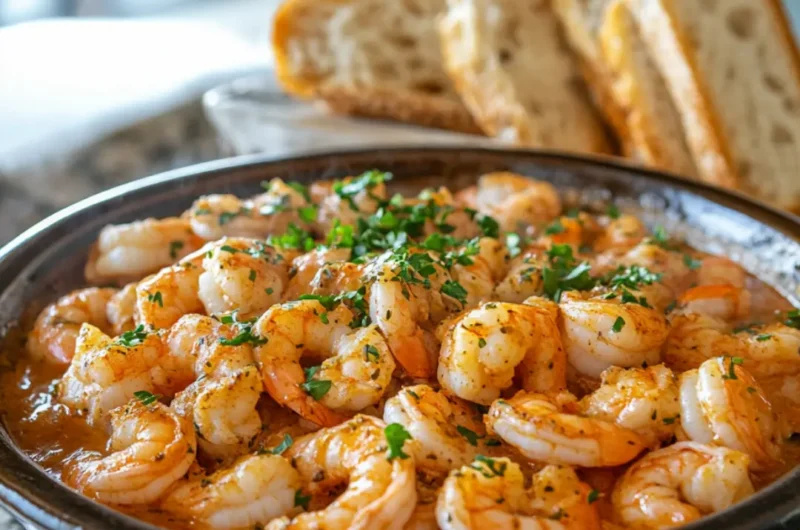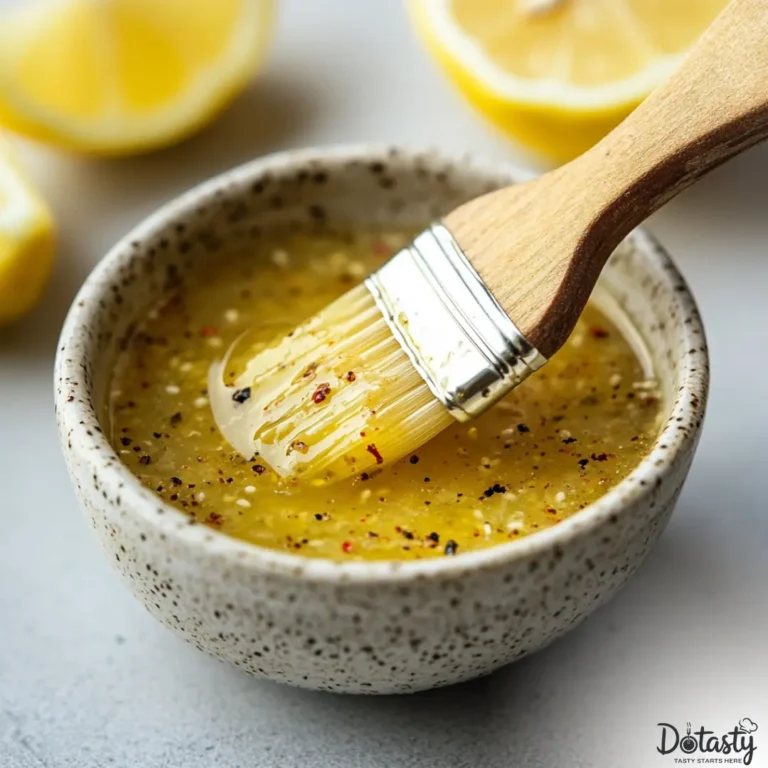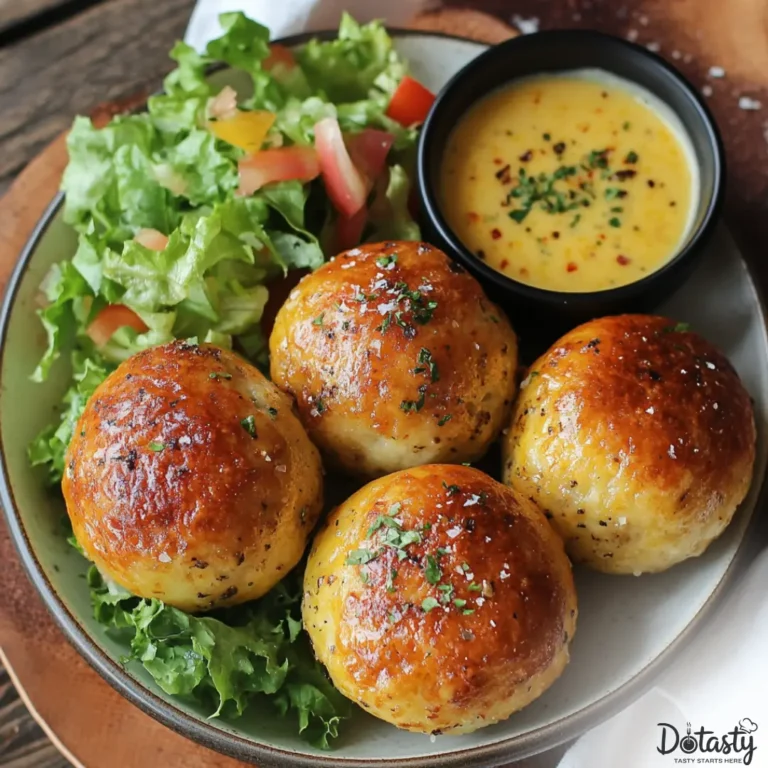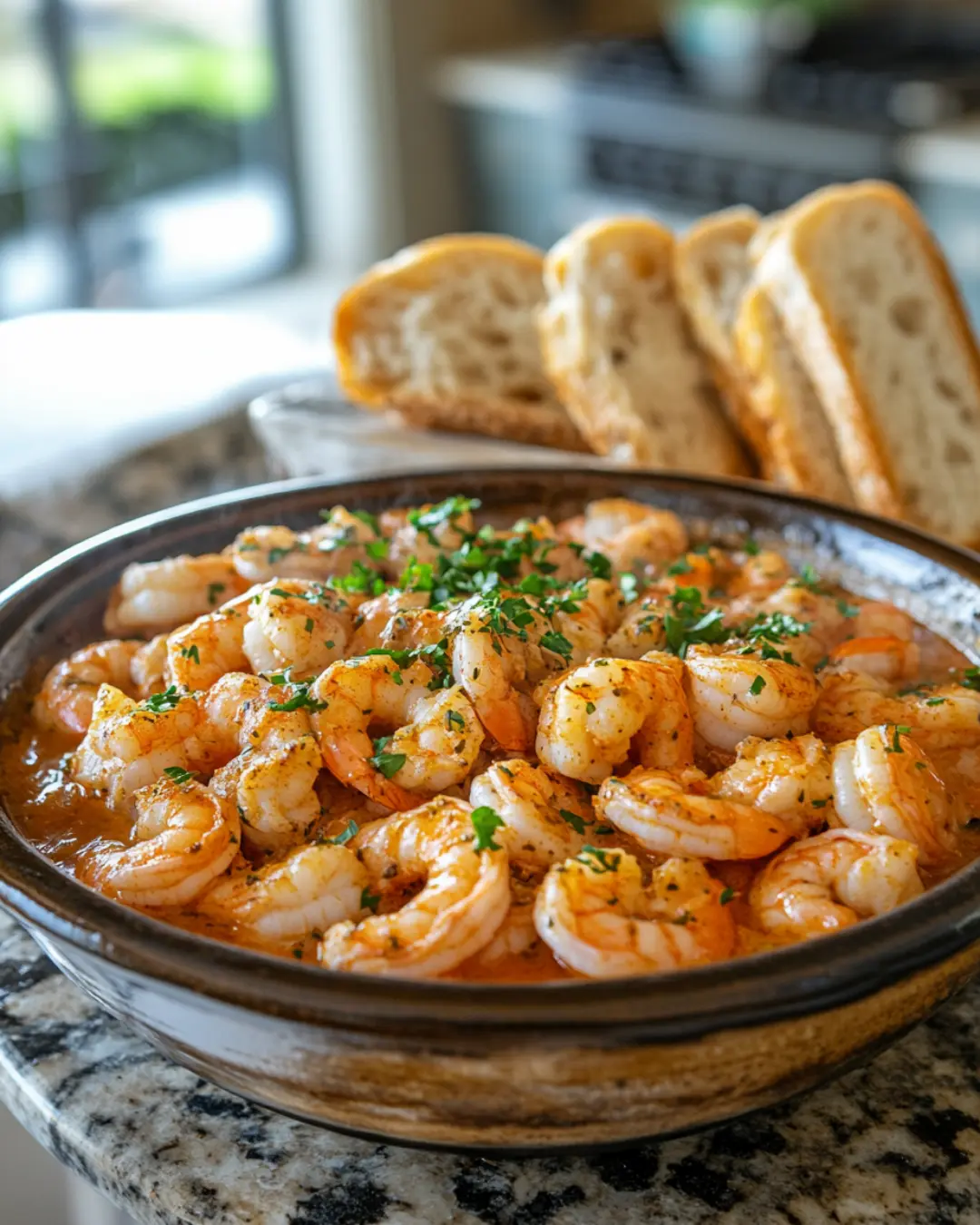
There’s nothing quite like a shrimp stew recipe to bring back the taste of Southern comfort. Whether you grew up near the Gulf Coast or just love the warmth of a hearty stew, this dish checks every box—rich, flavorful broth, tender bites of shrimp, and aromatic veggies cooked just right. It’s a bowlful of goodness that wraps around you like a soft quilt on a cool evening.
shrimp stew recipe is rooted in classic Southern kitchens, where a pot of stew simmering on the stove meant the family would soon gather. The flavor comes from layering onions, celery, garlic, and bell peppers with seasonings and seafood stock. A touch of tomato and a gentle simmer tie it all together. And of course, the shrimp—plump and perfectly cooked—is the star of the show. The texture should be silky, not rubbery, and there are a few tips below to help with that.
Some folks prefer it over fluffy white rice, others with a chunk of buttered cornbread. However you serve it, this shrimp stew recipe is as reliable as it is comforting. The full recipe is just below, but take a moment to browse the helpful cooking tips along the way. They’ll make sure every spoonful comes out just right.
Table of Contents
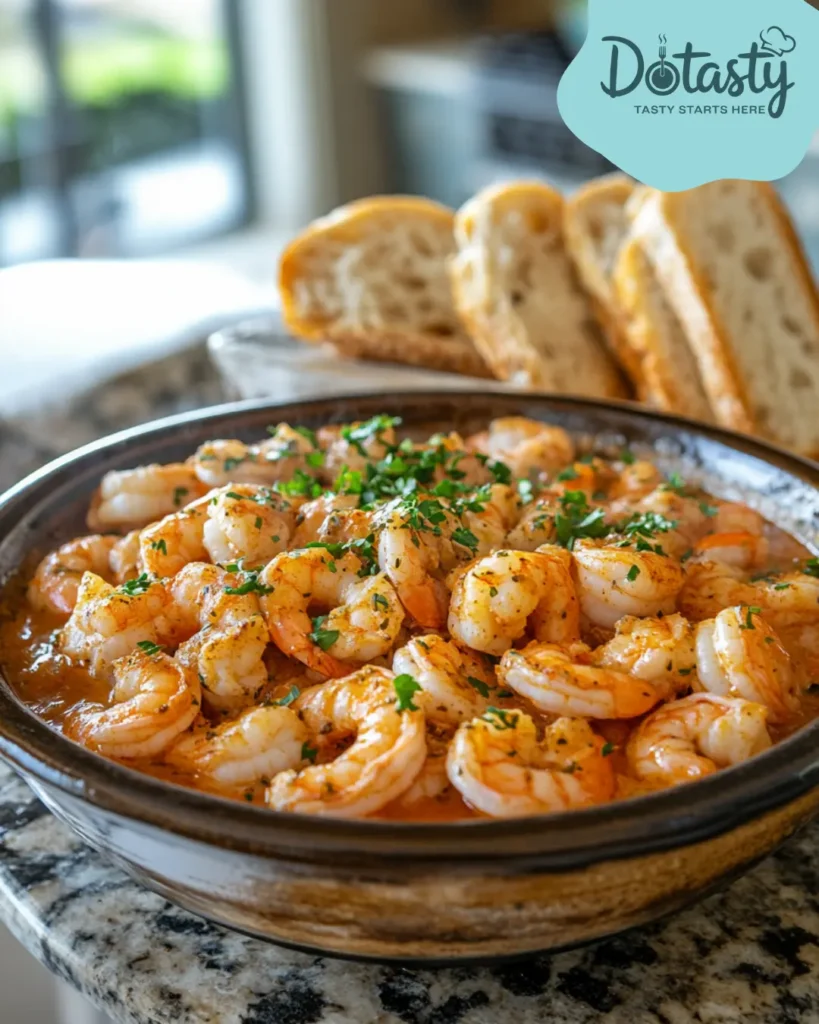
Shrimp Stew Recipe Ingredients
When gathering ingredients for this shrimp stew recipe, stick to the classics but feel free to adjust based on what you have in your pantry. Each component plays a role in building the deep, satisfying flavor that makes this stew so memorable.
Shrimp
Use large raw shrimp, peeled and deveined. Fresh or frozen both work, but be sure to thaw frozen shrimp completely. If you’d like them extra tender, a light sprinkle of baking soda (½ tsp per pound) before cooking does wonders.
Onion, Celery, and Bell Pepper
This holy trinity forms the aromatic backbone. Yellow or sweet onions are best. Any bell pepper color works, though green adds a slight bitterness that balances richness.
Garlic
A few cloves of minced garlic deepen the flavor. You can use pre-minced if that’s easier, but fresh garlic shines here.
Tomato Paste
A couple of tablespoons add depth and color. In a pinch, a splash of tomato sauce or crushed tomatoes can substitute, but tomato paste gives more concentrated flavor.
Seafood or Chicken Stock
Seafood stock brings authentic richness, but chicken broth is a fine substitute. Low-sodium versions help you control seasoning better.
Butter and Flour
These make a quick roux, giving body to the broth. You can substitute oil for butter if needed. For gluten-free, use a GF flour blend.
Seasonings
Salt, black pepper, paprika, thyme, and a pinch of cayenne are staples. Add bay leaves during the simmer for extra depth.
Parsley or Green Onion (Optional Garnish)
These add a touch of color and freshness at the end.
If you enjoy a heartier stew, diced potatoes or okra can be stirred in too. And for those who like it creamy, a splash of heavy cream at the end is delightful.
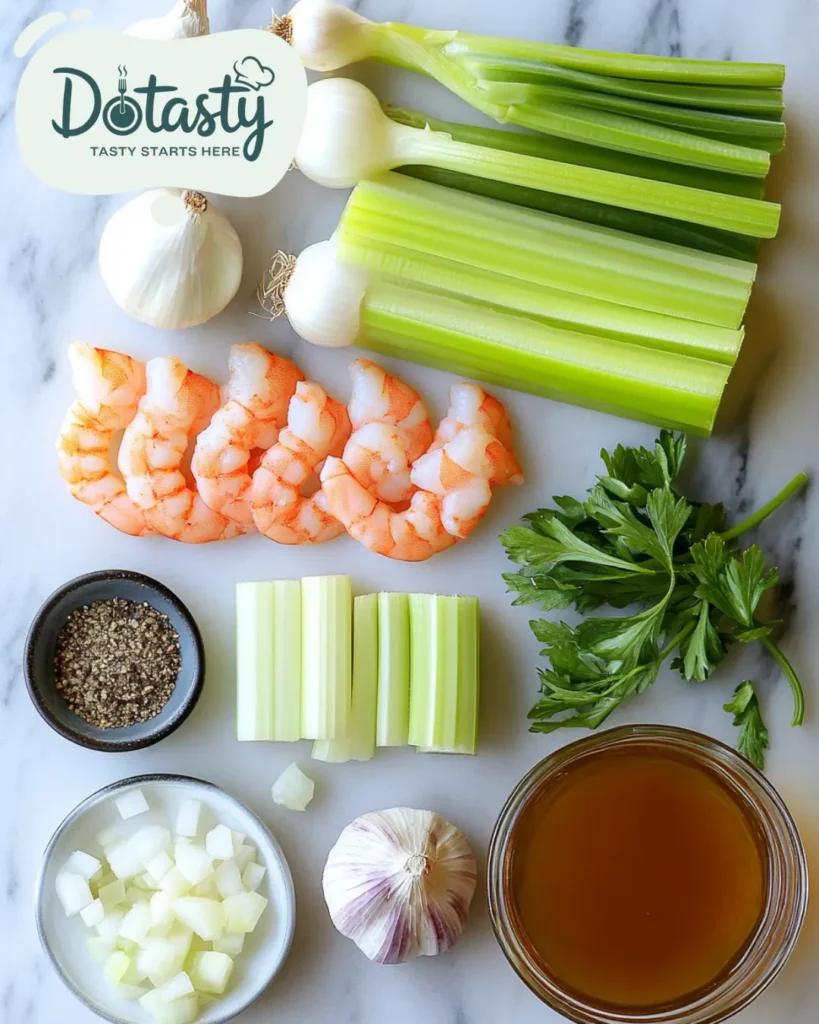
How To Make Shrimp Stew Recipe (Step-by-Step Guide)
Making this shrimp stew recipe is easy if you follow these steps! Take it one stage at a time, and your kitchen will be filled with that soul-warming aroma in no time.
Step 1 – Prepare the Ingredients
Start by chopping the onions, celery, and bell pepper. Mince the garlic and set it aside. Peel and devein the shrimp, then pat them dry with paper towels. If using frozen shrimp, be sure they’re completely thawed and drained. Toss them lightly with a pinch of baking soda and set aside while you build the base. This helps them stay plump and tender during cooking.
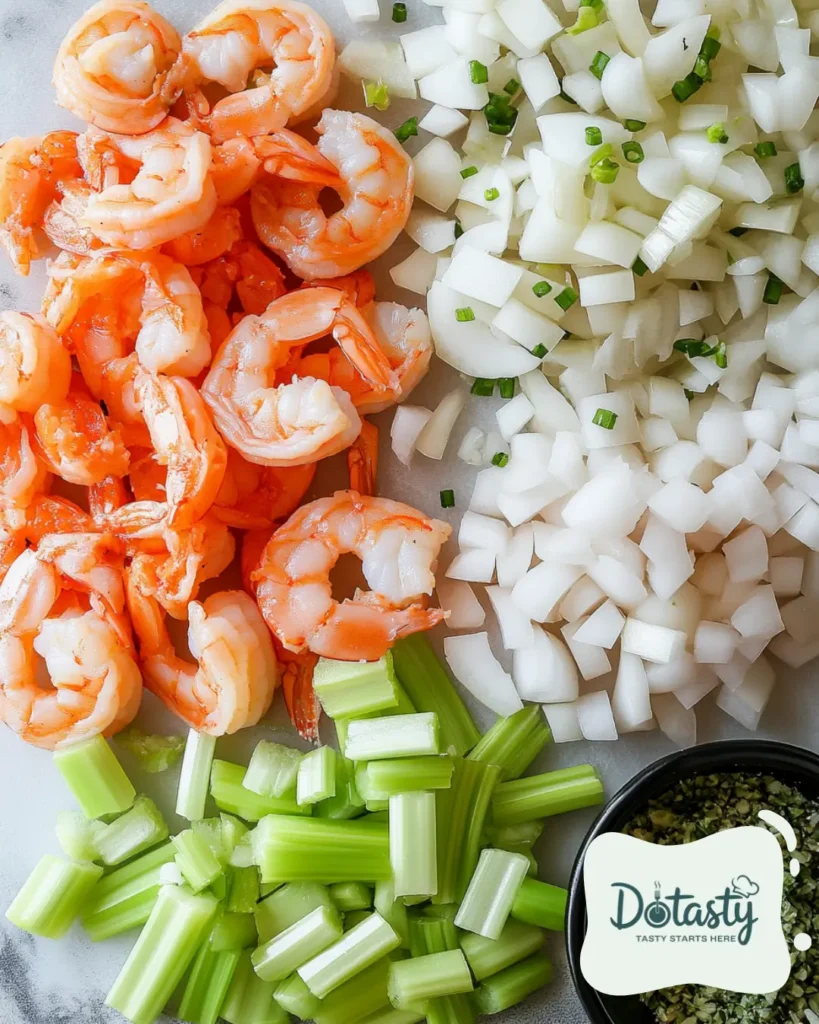
Step 2 – Cook the Base
In a large heavy pot, melt butter over medium heat. Add the onions, celery, and bell pepper. Sauté for 5–7 minutes until soft and slightly golden. Stir in the garlic and cook for another minute. Add the tomato paste and cook for 1–2 minutes to deepen the flavor, then sprinkle in flour and stir to form a quick roux.
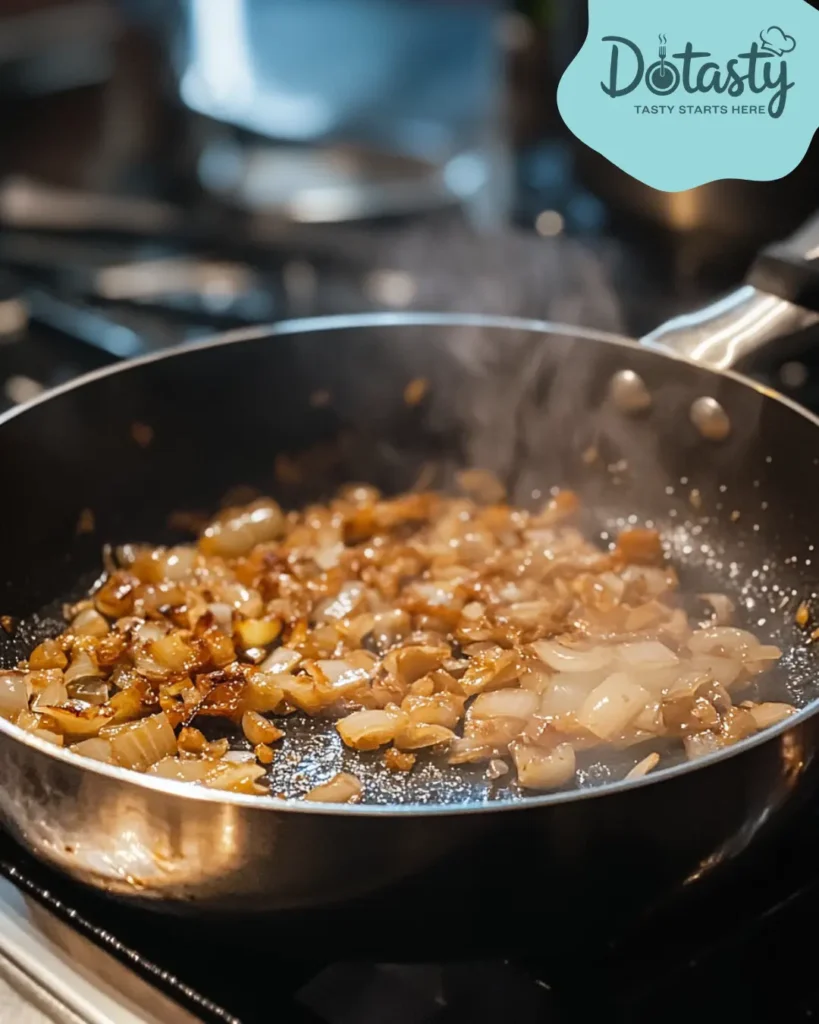
Step 3 – Add Main Ingredients
Slowly pour in the seafood or chicken stock, stirring to avoid lumps. Add the seasonings: salt, pepper, thyme, paprika, and bay leaf. Let the stew simmer gently for 10–15 minutes to develop flavor and thicken slightly. Stir occasionally to prevent sticking.
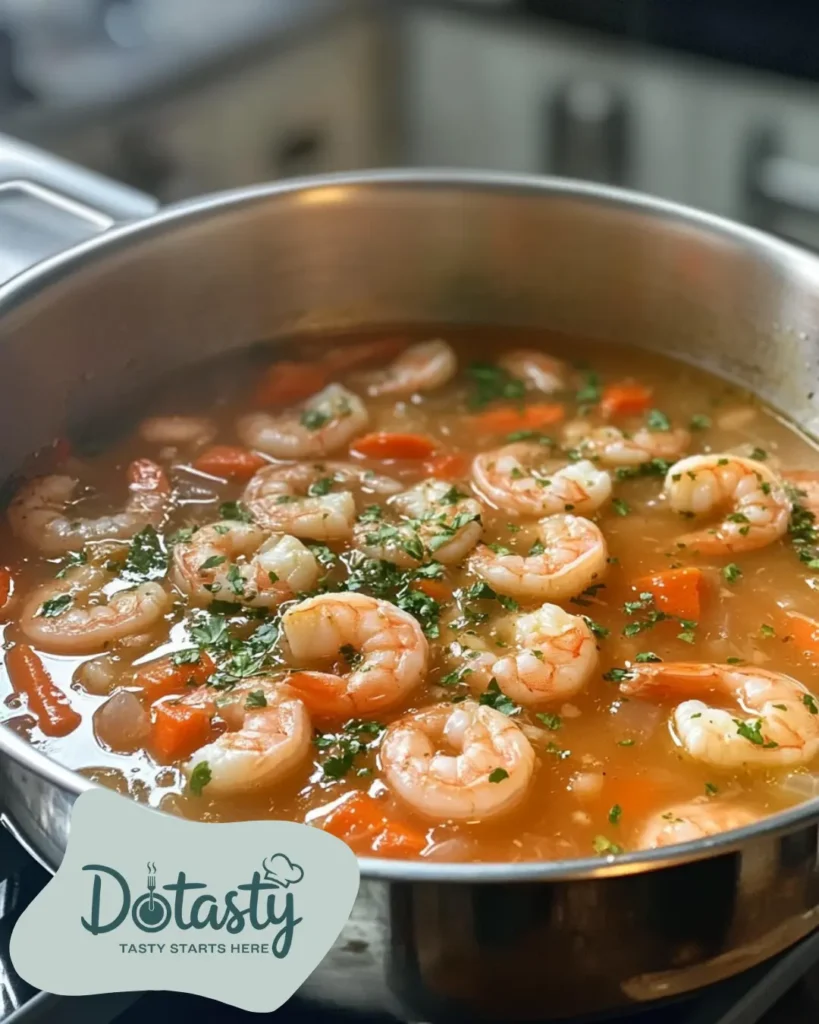
Step 4 – Simmer and Finish
Now add the shrimp. Simmer for just 3–5 minutes, or until they’re opaque and pink. Don’t overcook—they’ll keep cooking even after you remove the pot from heat. If using potatoes or cream, this is the time to stir them in.
Step 5 – Garnish and Serve
Remove the bay leaf. Ladle the stew into bowls and top with chopped parsley or green onion. Serve hot with your favorite sides.
This shrimp stew pairs wonderfully with sauces like our creamy Cajun Cream Sauce—perfect for drizzling on rice or dipping bread.
Tips for Success
To make this shrimp stew recipe as flavorful and satisfying as possible, a few simple techniques go a long way. Shrimp cook quickly, and balancing their texture with a rich stew base is key to making this dish shine.
Don’t overcook the shrimp.
Shrimp only need a few minutes to cook through. Overcooking makes them rubbery, so add them at the very end and remove the pot from the heat as soon as they turn pink and firm.
Use baking soda for tender shrimp.
A pinch of baking soda tossed with raw shrimp (about ½ teaspoon per pound) helps maintain a plump, juicy texture. Let it sit for 10–15 minutes before cooking.
Thicken gently with a roux or slurry.
Flour and butter make a quick roux that adds body without heaviness. For a gluten-free option, a cornstarch slurry works well—just stir it in during the simmer and heat gently until thickened.
Stock matters.
Seafood stock adds depth, but if you’re using chicken broth, consider tossing in a few shrimp shells during the simmer, then strain them out before adding the shrimp. This boosts flavor beautifully.
Taste and season at the end.
Let your stew simmer before making final seasoning adjustments. Flavors develop as it cooks, and shrimp can absorb salt quickly.
Serving Suggestions
This shrimp stew recipe is a meal in itself, but it truly comes alive when paired with the right side dish. Traditional Southern-style accompaniments add a rustic charm and round out the meal with texture and contrast.
Serve it over white rice.
This is the classic choice. The rice soaks up that savory broth beautifully and makes each bite more satisfying. For a little twist, try dirty rice or buttered grits.
Add some crusty bread or cornbread.
A thick slice of French bread or a golden wedge of cornbread helps mop up every last drop. Toasted baguette slices with a bit of garlic butter are also a wonderful choice.
Pair with a crisp salad.
To lighten the meal, a fresh green salad with a tangy vinaigrette offers a refreshing contrast. It balances the richness of the stew and adds a bit of crunch.
Sip on something cold.
Sweet tea, lemonade, or even a light beer go well with the savory depth of the stew.
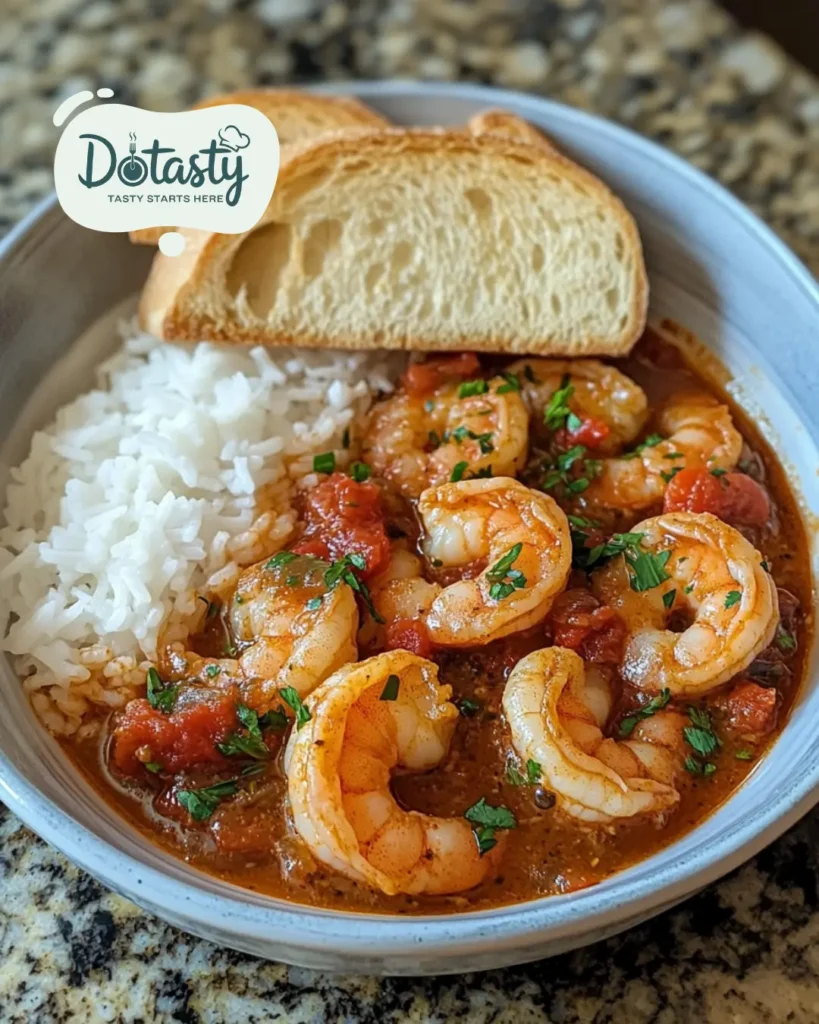
If you alredy like the shrimp stew Recipe For a fresh and hearty side, our Dominican Potato Salad adds a creamy, tangy note that complements this dish beautifully.
Variations and Customizations
One of the beauties of this shrimp stew recipe is how easily it adapts to what you have on hand or your dietary needs. From heat levels to proteins, here’s how to make it your own while keeping the heart of the dish intact.
Make it spicy.
Add diced jalapeño or a few dashes of hot sauce while the base is simmering. For shrimp stew recipe bold heat, a pinch of cayenne or crushed red pepper does the trick.
Try different proteins.
While shrimp is the star, you can swap in scallops, chunks of firm white fish like cod or tilapia, or even smoked sausage for a Creole-style twist. A mix of seafood—shrimp, crab, and clams—turns it into a coastal celebration.
Go dairy-free or gluten-free.
Use oil instead of butter, and thicken with cornstarch slurry or gluten-free flour. The flavor will stay rich, and the texture just as satisfying.
Add vegetables.
Chopped okra, spinach, or even sweet corn can stretch the dish and add nutrition. Diced potatoes or sweet potatoes make it more filling and hearty.
Try a tomato-based variation.
For a more gumbo-style stew, use crushed tomatoes and add a little more stock. Let it simmer until the flavors marry.
This dish truly invites personalization while staying true to its roots.
How to Store and Reheat
This shrimp stew recipe keeps surprisingly well for a couple of days, making it a comforting leftover option. However, a little care goes a long way in preserving the shrimp’s tender texture and the stew’s rich flavor.
Refrigerator Storage:
Let the stew cool completely, then transfer it to an airtight container. Store in the refrigerator for up to 3 to 4 days. The flavors actually deepen over time, which makes it even better the next day.
Freezer Tips:
While you can freeze it, be aware that shrimp may turn a bit mushy once thawed. If freezing, consider making the stew base first, then add fresh shrimp after reheating.
Reheating Instructions:
Gently reheat the stew in a saucepan over medium-low heat. Stir occasionally, and don’t let it boil—this keeps the shrimp from getting tough. For microwave reheating, cover loosely and heat in 1-minute intervals, stirring in between.
Extra tip:
If your stew thickens too much in the fridge, just stir in a splash of broth or water as it warms up.
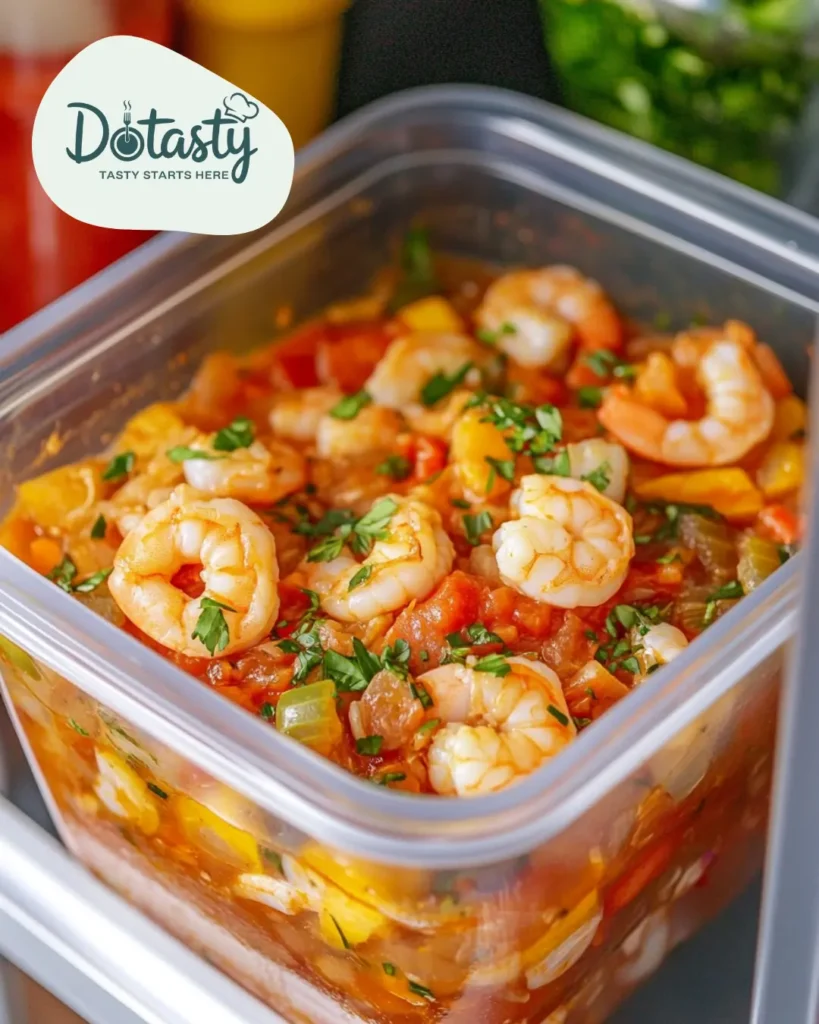
Can You Freeze Shrimp Stew Recipe?
Yes, you can freeze this shrimp stew recipe, but there are a few things to keep in mind to maintain the best texture and flavor when reheated.
Shrimp tends to lose its tenderness and can become slightly rubbery after being frozen and reheated. If you’re planning to freeze, consider preparing the stew base first—everything except the shrimp. Freeze that portion in a sealed container for up to 2 months.
When you’re ready to enjoy it, thaw the stew base in the fridge overnight. Warm it gently on the stove, then add fresh or thawed shrimp just before serving. Cook for 3–5 minutes until the shrimp are pink and cooked through.
This method ensures you get all the comfort of the stew with none of the overcooked seafood.
Shrimp Stew Recipe Card
Shrimp Stew Recipe
Course: DinnerCuisine: Southern AmericanDifficulty: Medium4
servings40
minutes35
minutes310
kcalA flavorful Southern American shrimp stew with sautéed vegetables, herbs, and optional creamy finish. Perfect over rice or with crusty bread.
Gather Your Goodies
1 lb large shrimp, peeled and deveined
½ tsp baking soda (for shrimp)
2 Tbsp butter
1 small onion, chopped
2 ribs celery, chopped
1 small green bell pepper, diced
3 cloves garlic, minced
2 Tbsp tomato paste
2 Tbsp all-purpose flour
3 cups seafood or chicken stock
1 tsp salt (to taste)
½ tsp black pepper
½ tsp paprika
½ tsp dried thyme
1 bay leaf
Optional: pinch of cayenne pepper
Optional: chopped parsley or green onions for garnish
Optional: ½ cup heavy cream (for creamy version)
Let’s Get Cooking
- Toss shrimp with baking soda and set aside while you prep vegetables.
- In a large pot, melt butter over medium heat. Add onion, celery, and bell pepper. Sauté 5–7 minutes. Stir in garlic and cook for 1 minute.
- Add tomato paste and cook for 1–2 minutes. Stir in flour to make a light roux. Gradually add stock, stirring constantly.
- Add salt, pepper, paprika, thyme, and bay leaf. Bring to a simmer and cook for 10–15 minutes, stirring occasionally.
- Add shrimp and simmer for 3–5 minutes until pink and opaque. Stir in cream if using. Remove the bay leaf.
- Garnish with parsley or green onions. Serve over rice, with bread, or as-is.
Notes
- Don’t overcook the shrimp—they go in at the very end. For gluten-free, use cornstarch slurry instead of flour. Add a splash of lemon juice for brightness. Simmer broth with shrimp shells for extra flavor.
For cozy recipe tips and updates straight from our kitchen, follow us on TastyDo Facebook.
FAQs About Shrimp Stew Recipe
Why add baking soda to raw shrimp?
Baking soda helps shrimp stay tender and springy after cooking. A small amount (about ½ teaspoon per pound) changes the pH slightly, helping the proteins hold moisture and keep that juicy bite.
What is in the shrimp stew Recipe?
A traditional shrimp stew recipe includes shrimp, onions, celery, bell pepper, garlic, tomato paste, seafood or chicken stock, and seasonings like thyme, paprika, and bay leaf. Some versions include potatoes, okra, or cream for added richness.
Why do you soak shrimp in milk before frying?
Soaking shrimp in milk before frying can help tenderize them and tone down any fishy smell. It also helps seasonings stick to the shrimp and encourages even browning when frying.
How do you thicken shrimp stew?
You can thicken shrimp stew Recipe with a roux (flour and butter), cornstarch slurry, or even a scoop of mashed potatoes. Simmering gently also helps the broth reduce naturally for a thicker texture.
How do Chinese restaurants make shrimp so tender?
They often use a technique called “velveting,” which involves marinating shrimp in a mixture of egg white, cornstarch, and sometimes baking soda, followed by quick blanching in oil or water. This keeps the shrimp silky and tender.
How much baking soda do you put in shrimp?
Use about ½ teaspoon of baking soda per pound of raw shrimp. Let it sit for 10–15 minutes before rinsing or cooking for the best texture.
Final Thoughts on Shrimp Stew Recipe
There’s a reason this shrimp stew recipe has stayed close to Southern hearts for generations. It’s simple, soulful, and full of flavor that satisfies from the very first spoonful. Whether you’re cooking for a weeknight dinner or serving guests, it brings a comforting, homemade feel that’s hard to beat.
From the tender shrimp to the savory broth and warm aromatics, every part of this dish tells a story. Don’t be afraid to make it your own—whether by adding a little heat, stirring in extra veggies, or spooning it over buttery rice. This is the kind of meal that invites second helpings and shared memories.
If you enjoy this shrimp stew Recipe, leave a comment or star rating to let us know how it turned out. And while you’re here, try something fun and flavorful like our Reuben Quesadilla Recipe—a playful twist on a deli classic.

